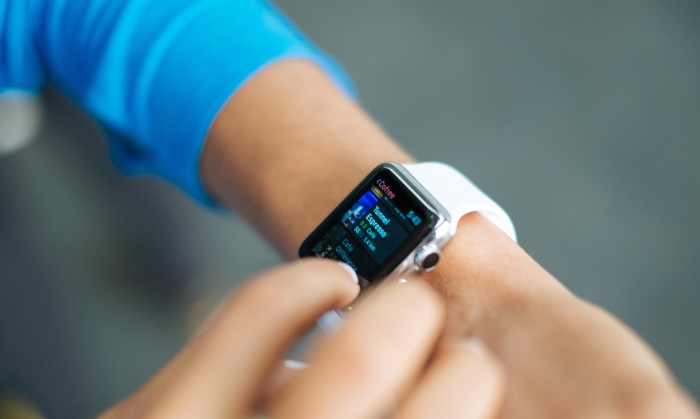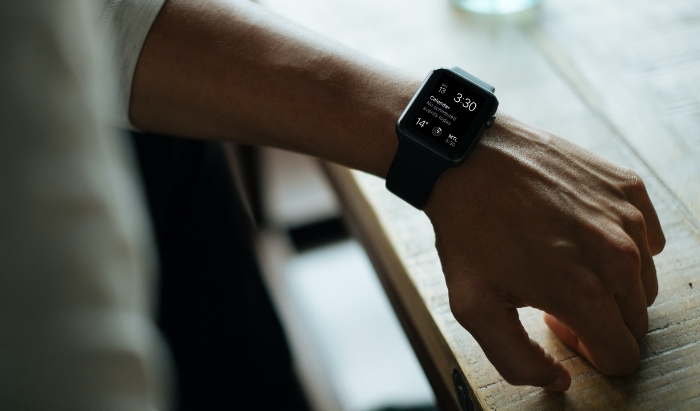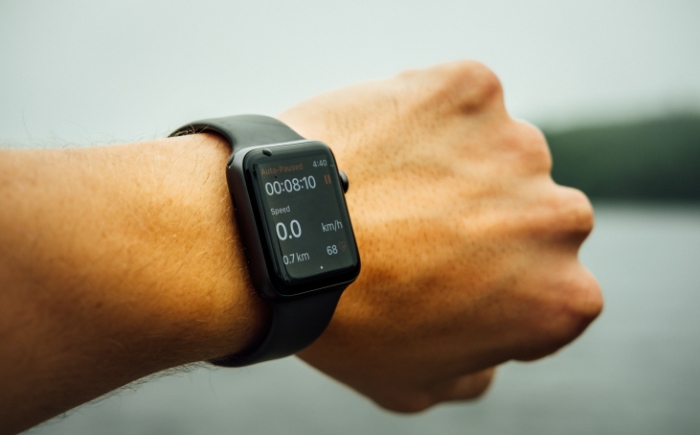Are Smartwatches Worth It? Beyond Time-Keeping

Smartwatches, once considered a luxury, have now seamlessly woven themselves into the fabric of our daily lives. As a striking convergence of fashion and technology, these wearables have sparked a lively debate regarding their true utility.
Are they just a fashionable gadget, or do they offer indispensable features that justify their place on our wrists? This article dives into the rise of wearable technology, examining the merits and drawbacks of smartwatches, and aims to answer the burning question: Are they truly worth it?
History and Evolution of Smartwatches
Before the era of touchscreen and advanced connectivity, the concept of a ‘smart’ watch was far simpler. The initial forays into this domain saw watches with built-in calculators and digital interfaces in the late 1970s and 1980s.
Brands like Casio pioneered this wave, introducing the world to the idea that a watch could be more than just a time-keeping device.
Pioneers of Modern Smartwatches
As we transitioned into the 21st century, technology companies started to envision the wrist as a new frontier for personal computing. Companies like Microsoft, with their SPOT (Smart Personal Object Technology) watch, laid the groundwork.
However, it was Pebble, with its eponymous smartwatch in 2012, that truly captured the public’s imagination, heralding the beginning of the modern smartwatch era.
Rise of the Tech Titans
Apple’s entry into the market in 2015 with the Apple Watch turned the smartwatch from a niche gadget into a mainstream accessory. Around the same time, other tech giants like Samsung, Google, and Garmin introduced their iterations, each bringing unique features and integrations.
The competition led to rapid advancements in design, functionality, and user experience.
Evolution of Features and Connectivity
Over the years, smartwatches have evolved far beyond mere notification hubs for smartphones. They now come equipped with:
Health and Fitness Trackers: Monitoring heart rate, sleep patterns, and even oxygen saturation levels.
GPS and Navigation Tools: Essential for runners, travelers, and those needing directional assistance.
Multimedia Control: Music, camera remote features, and even streaming capabilities.
Voice Assistants and Calls: Making them independent communication devices.
App Ecosystems: Expanding their utility with a plethora of downloadable apps tailored for the wrist.
Towards a Future of Integration
The present trajectory suggests an even deeper integration of smartwatches into our daily routines. With the rise of IoT (Internet of Things), smartwatches are positioned to act as control hubs for a variety of devices and services, making them even more central to personal technology ecosystems.
Advantages of Smartwatches
With every technological advancement comes a plethora of benefits, and smartwatches are no exception. These devices offer a combination of features that cater to diverse needs, seamlessly blending into various aspects of our daily lives.
Fitness and Health Monitoring
Smartwatches have become personal health and fitness companions for many. With a range of sensors and software, they offer the following benefits:
Heart Rate Monitoring: Continuous tracking helps users maintain optimal heart rates during exercises and identifies irregularities.
Sleep Tracking: Understand sleep patterns, duration, and quality to optimize rest and improve overall well-being.
Step Counting and Calorie Burn: Motivate daily movement and monitor progress towards fitness goals.
Specialized Workout Modes: Tailored tracking for various activities like running, swimming, cycling, and even yoga.
Convenience in Daily Life
The ability to access a plethora of information with a twist of the wrist can’t be understated:
Notifications: Quickly glance at messages, emails, and app notifications without pulling out a smartphone.
Reminders: Get timely alerts for appointments, medications, and other important tasks.
Smart Device Control: Operate smart home devices, adjust music volume, or even trigger smartphone cameras remotely.
Navigation and Communication
Being lost or out of touch isn’t an option with the modern smartwatch:
GPS Features: Get directions on-the-go, especially useful for runners and cyclists who want to track their routes.
Quick Responses: Send quick texts, emojis, or voice messages directly from the watch.
Answering Calls: Some advanced models even allow for answering calls and chatting without needing a phone.
Customizability and Personalization
Smartwatches can be a reflection of individuality and style:
Interchangeable Watch Faces: Choose from digital designs, classic analog looks, or even personal photos.
Straps and Accessories: Switch between leather, metal, rubber, or fabric bands to match outfits or occasions.
Personalized App Layouts: Rearrange apps and features to suit individual preferences and priorities.
Enhanced Productivity

For the multitaskers and professionals, smartwatches serve as efficient productivity tools:
Calendar Integration: Stay ahead of meetings, appointments, and events.
Task Management: Set to-do lists, reminders, and achieve daily tasks seamlessly.
Voice Assistants: Some models integrate with Siri, Google Assistant, or Alexa, enabling hands-free commands and queries.
In essence, smartwatches have woven themselves into our daily routines by enhancing our connectivity, ensuring our health, and amplifying our productivity. Their multifunctionality, combined with their portability, positions them as one of the most useful gadgets in the modern tech landscape.
Criticisms and Drawbacks of Smartwatches
No piece of technology is without its critiques. While smartwatches offer many advantages, they also present certain challenges and criticisms that are worth pondering before making an investment.
Battery Life Concerns
While traditional watches can run for years on a single battery or winding, smartwatches have a significantly shorter lifespan between charges:
Frequent Charging: Most smartwatches require daily or every other day charging, which can be inconvenient.
Dependence on Electricity: In situations where charging is not possible, like during extended outdoor trips, this becomes a significant limitation.
Price Point and Value Proposition
The cost of a smartwatch can often be a point of contention:
High Initial Investment: Premium smartwatches from renowned brands can be expensive, sometimes rivaling the cost of smartphones themselves.
Questionable Long-Term Value: Given the rapid tech advancements, today’s premium features can become tomorrow’s basics, making frequent upgrades a potential concern.
Redundancy with Smartphones
There’s an ongoing debate about whether smartwatches merely replicate smartphone functions:
Overlapping Functionalities: Many features, like notifications, music controls, and even some apps, are available on both devices.
Tech Overload: The constant buzzes and notifications on the wrist might feel like an extension of the smartphone distraction, leading to potential digital burnout.
Durability and Longevity Concerns
Unlike classic timepieces that can last for decades, smartwatches face durability challenges:
Wear and Tear: Touchscreen displays can be prone to scratches, dents, or even breakage.
Water Resistance: While many claim to be water-resistant, prolonged exposure, especially in saltwater, can be detrimental.
Short Tech Lifespan: As with most tech gadgets, older models may not support new software updates or apps, leading to obsolescence.
Dependence and Data Privacy
Reliance on smartwatches can come with underlying risks:
Data Sharing: Health data, location, and more might be shared with third parties, leading to privacy concerns.
Over-reliance on Tech: There’s a possibility of becoming too dependent on the device, potentially overlooking natural instincts, especially in areas like health monitoring.
While smartwatches offer a suite of advantages, it’s crucial to recognize and weigh these criticisms. Being informed about potential drawbacks helps prospective buyers make decisions that align with their needs and lifestyle, ensuring they get the best out of their investment.
Considerations Before Buying a Smartwatch

A smartwatch purchase isn’t one to be made lightly. There’s a myriad of factors to contemplate, each influencing the final decision.
Understanding these considerations ensures an informed choice that aligns with individual needs and preferences.
Define Your Purpose and Use-case
Before diving into the world of smartwatches, it’s essential to understand your primary motivations:
Health and Fitness: If monitoring health metrics is your primary concern, look for models with advanced sensors and reliable tracking.
Productivity and Connectivity: For those seeking an extension of their smartphone or a tool to enhance daily tasks, prioritize features like app integrations, notifications, and voice assistants.
Fashion and Aesthetics: If the watch is more of a fashion statement, consider design, brand, and customizability.
Compatibility with Existing Devices
Not all smartwatches play well with all smartphones:
Operating System Match: Ensure the smartwatch OS is compatible with your phone’s OS (e.g., Apple Watch with iOS, Wear OS watches with Android).
App Ecosystem: The apps you plan to use should be available and compatible with the smartwatch platform of your choice.
Budget Constraints and Value
Price ranges vary considerably in the smartwatch domain:
Set a Price Range: Determine how much you’re willing to spend before starting your search.
Understand Value: More expensive doesn’t always mean better. Ensure the features you’re paying for align with your needs.
Brand and Ecosystem Loyalty
Staying within a particular brand or ecosystem can offer seamless integration:
Synchronized Ecosystems: Brands like Apple or Samsung offer tight integration between their smartwatches, phones, tablets, and even laptops.
Consistent User Experience: Staying within a brand can mean a more predictable and harmonized user experience.
Battery Life and Maintenance
Given that battery life is a common concern, it’s an essential factor to consider:
Expected Battery Duration: Check how long the smartwatch lasts on a single charge and see if it fits your lifestyle.
Charging Mechanisms: Some watches use proprietary chargers, while others might use standard USB types. Consider availability and convenience.
Durability and Warranty
For a device that’s constantly exposed, durability is paramount:
Build Quality: Research materials used, especially for the watch face and casing.
Water and Dust Resistance: Depending on your lifestyle, these might be crucial features.
Warranty and Repair Options: Check the duration and terms of the warranty. Consider brands with good customer service reputations and accessible repair centers.
Future-Proofing
Given the rapid pace of tech evolution, it’s wise to think a step ahead:
Software Updates: Ensure the chosen model receives regular software updates to maintain security and feature parity.
Hardware Specs: Slightly better specs might provide a longer functional lifespan before the device becomes obsolete.
In the end, choosing a smartwatch is a personal decision influenced by individual needs, lifestyle, and preferences. By considering the points above, potential buyers can make an informed choice, ensuring satisfaction and value for money.
Conclusion
The world of smartwatches is vast, filled with a myriad of options catering to diverse needs and preferences. From the days of simple calculator watches to today’s technologically advanced wrist-worn computers, the evolution of smartwatches is nothing short of remarkable.
They’ve transcended their role as mere timepieces, becoming integral to our health, communication, productivity, and fashion statements.
While the advantages they offer are undeniable – from health tracking to enhancing daily productivity – they’re not without their criticisms. Battery life, data privacy, and cost considerations are just a few of the challenges prospective buyers may grapple with.
Nevertheless, by recognizing individual needs, setting a budget, and considering the long-term implications of such a purchase, one can navigate the complex landscape with confidence.
In the era of digitalization, where connectivity and instant information are valued, smartwatches carve a niche for themselves as devices that offer convenience at our fingertips. Whether they’re “worth it” depends largely on personal use-cases and values.
But one thing’s for sure: they’ve redefined how we view and interact with technology, reshaping the boundaries between form and function.



